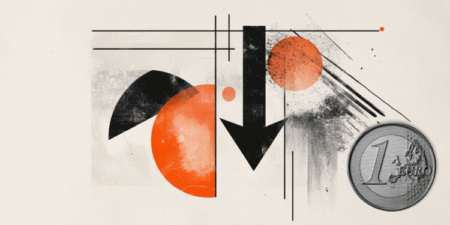- Gold price attracts heavy selling for the third successive day amid a combination of factors.
- Signs of easing US-China tensions and a modest USD uptick weigh on the precious metal.
- Bets for aggressive Fed rate cuts should cap the USD and limit losses for the XAU/USD pair.
Gold price (XAU/USD) maintains a heavily offered tone heading into the European session, though it has managed to rebound slightly from over a two-week low, around the $3,221 touched earlier this Thursday. The recent optimism over the potential de-escalation of tensions between the US and China – the world’s two largest economies – remains supportive of a positive risk tone. Furthermore, the US Dollar (USD) advances to a two-week top and turns out to be another factor undermining demand for the safe-haven precious metal.
Meanwhile, prospects for more aggressive policy easing by the Federal Reserve (Fed), bolstered by a surprise contraction in the US GDP and signs of easing inflationary pressures, could act as a headwind for the USD. This, in turn, holds back traders from placing fresh bearish bets around the non-yielding Gold price and helps limit further losses. Investors now look forward to key US macro releases scheduled at the beginning of a new month, including the Nonfarm Payrolls (NFP) report on Friday, for some meaningful impetus.
Daily Digest Market Movers: Gold price bears retain control amid hopes for US-China tariff negotiations
- US President Donald Trump said earlier this Thursday there is a “very good probability we’ll reach a deal with China” and added that we have “potential” trade deals with India, South Korea and Japan. The comments add to the recent optimism and further boost investors’ confidence.
- The US Dollar ticks higher in reaction to Trump’s remarks and drags the safe-haven Gold price lower for the third consecutive day on Thursday. A breakdown below the $3,265-$3,260 pivotal support prompts technical selling and further contributes to the intraday decline to a two-week low.
- Automatic Data Processing (ADP) reported on Wednesday that private sector employment rose by 62K in April. This marked a notable decline from the 147K increase (revised from 155K) recorded in March and also missed the market expectation for a reading of 108,000 by a wide margin.
- Adding to this, the advance estimates by the Bureau of Economic Analysis, the US economy contracted at an annualized rate of 0.3% during the first quarter of 2025 after growing at a solid pace of 2.4% in the previous quarter. The data, in turn, revives concerns about a looming US recession.
- Meanwhile, the US Personal Consumption Expenditures (PCE) Price Index eased to the 2.3% YoY rate in March from 2.5% previous. Moreover, the core PCE Price Index, which excludes volatile food and energy prices, rose 2.6% vs. 3% in February, pointing to easing inflationary pressures.
- The dismal US macro data reaffirms bets that the Federal Reserve will resume its rate-cutting cycle in June. Traders are pricing in the possibility that the US central bank will lower borrowing costs by 100 basis points by the year-end. This should cap the USD and support the non-yielding yellow metal.
- On the geopolitical front, Kremlin spokesperson Dmitry Peskov said on Wednesday that Russia can mobilize for war on a scale comparable to the Soviet Union during World War II if necessary. Moreover, a Russian drone attack killed two civilians and injured five others in southern Ukraine.
- This might further contribute to limiting losses for the XAU/USD pair. Traders now look forward to key US macro releases – the ISM Manufacturing PMI later this Thursday and the Nonfarm Payrolls report on Friday. The data will provide cues about the Fed’s rate-cut path and influence the commodity.
Gold price seems poised to slide further; breakdown below the $3,265-3,260 pivotal support in play
From a technical perspective, the overnight breakdown below the 38.2% Fibonacci retracement level of the latest leg up from the vicinity of mid-$2,900s or the monthly swing low, and the $3,265-$3,260 was seen as a key trigger for bears. That said, oscillators on the daily chart – though they have been losing positive traction – are yet to confirm the negative outlook. Hence, it will be prudent to wait for acceptance below the 50% Fibo. level, around the $3,229-$3,228 region, before positioning for further losses. The Gold price might then accelerate the decline toward the $3,200 round figure en route to the 61.8% Fibo. level, around the $3,160 zone.
On the flip side, any attempted recovery might now confront resistance near the aforementioned support breakpoint, around the $3,260-$3,265 region. This is followed by the 38.2% Fibo. level, just ahead of the $3,300 mark, which if cleared might trigger a short-covering rally and lift the Gold price to the $3,348-$3,350 supply zone. Some follow-through buying, leading to a subsequent strength beyond the $3,367-$3,368 region (23.6% Fibo. level), will suggest that the recent corrective pullback has run its course. The XAU/USD pair might then aim to reclaim the $3,400 mark and extend the momentum further toward the $3,425-3,427 intermediate hurdle before attempting to conquer the $3,500 psychological mark.
US Dollar PRICE Today
The table below shows the percentage change of US Dollar (USD) against listed major currencies today. US Dollar was the strongest against the Japanese Yen.
| USD | EUR | GBP | JPY | CAD | AUD | NZD | CHF | |
|---|---|---|---|---|---|---|---|---|
| USD | 0.21% | 0.27% | 1.01% | 0.00% | 0.04% | -0.01% | 0.16% | |
| EUR | -0.21% | 0.06% | 0.75% | -0.24% | -0.17% | -0.21% | -0.07% | |
| GBP | -0.27% | -0.06% | 0.67% | -0.27% | -0.23% | -0.28% | -0.13% | |
| JPY | -1.01% | -0.75% | -0.67% | -0.96% | -0.90% | -1.00% | -0.86% | |
| CAD | -0.00% | 0.24% | 0.27% | 0.96% | 0.05% | -0.01% | 0.14% | |
| AUD | -0.04% | 0.17% | 0.23% | 0.90% | -0.05% | -0.05% | 0.11% | |
| NZD | 0.00% | 0.21% | 0.28% | 1.00% | 0.00% | 0.05% | 0.15% | |
| CHF | -0.16% | 0.07% | 0.13% | 0.86% | -0.14% | -0.11% | -0.15% |
The heat map shows percentage changes of major currencies against each other. The base currency is picked from the left column, while the quote currency is picked from the top row. For example, if you pick the US Dollar from the left column and move along the horizontal line to the Japanese Yen, the percentage change displayed in the box will represent USD (base)/JPY (quote).
Read the full article here
















